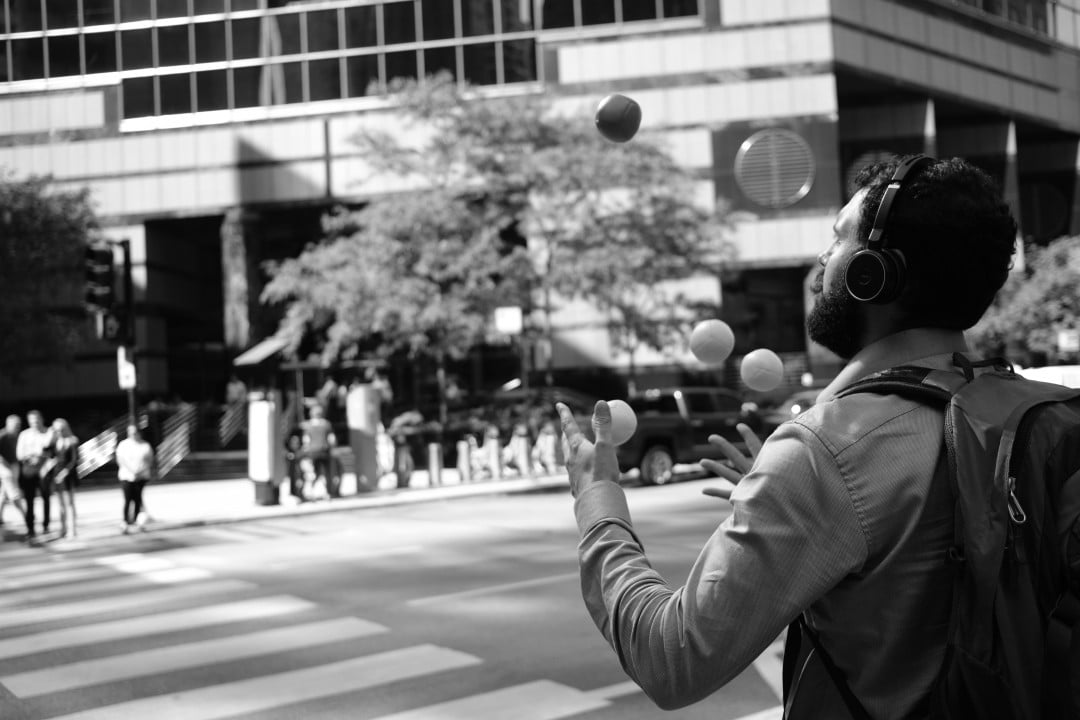Good leaders are stepping up to shine during the COVID-19 crisis.
Think for a moment about how you are personally responding to the stress of this pandemic situation. It’s a big one, it’s a whopper, no doubt. But are you responding to this particularcrisis differently than you respond to other more minor stressors that you’ve experienced in the past?
My guess is, probably not.
We are creatures of habit. We have carved pathways in our brain by reacting to stressful triggers with the same responses over and over again. Maybe you zone out and binge watch Tiger King to feel better. Maybe you’re a nail biter, a candy snacker, or a margarita maker. (No judgement here!) But unless you’ve really intentionally tried to alter your stress habits recently, chances are you’re handling the season of COVID-19 like you handle any other uncertain or stressful situation.
For me, it’s throwing myself into my work. That has always been my “M.O.” When I was young, I would tend to focus on schoolwork instead of dealing with friendship or family challenges. In my first job out of college, I focused on making more sales calls than anyone else during a messy breakup with my ex. When my current partner was getting stitches in the emergency room in the middle of the night, I was in the waiting room … working. (Yes, while he was profusely bleeding over the kitchen sink, I was throwing my laptop and charger into a bag. I didn’t judge you about the margaritas, so take it easy on me.)
STRONG LEADERS ARE STEPPING UP … FOR SOME
Right now during the COVID-19 crisis, we are seeing good leaders are stepping up to shine. They’re taking the time to pause and check in with their employees and teammates on their stress levels, to let everyone process their stress reactions in different ways. I’ve seen that look like:
- Carving out extra time at the beginning of conference calls to take everyone’s temperature. (Metaphorically speaking here, but let’s hope everyone is also operating at a nice healthy 98.6.)
- Adding new, fun ways for employees to engage with each other remotely throughout the week. Virtual happy hours, living room dance contests, and sharing pictures of kids and pets – err, our “new coworkers” – hanging out with us at home.
- Being flexible with work hours and deliverables – good leaders have built trust with their employees, so it doesn’t really matter if you finish that presentation or report between the hours of 9-5. They know when you’re done homeschooling and making grilled cheese and taking a yoga class on YouTube to restore your sanity, you’ll get to it. Good leaders give plenty of wiggle room.
This list could go on. I’ve seen some really inspirational examples of great leadership, both first and secondhand, over the last month. But there’s a sneaky stress reaction that I’m not sure leaders really know how to handle right now. For those employees who respond to stress like I do, by just working, and working, and working some more, we probably appear to be the person on the team who is “coping” really well. We’re delivering things on time, showing up for all the calls, and asking for more assignments. And leaders won’t see a need to intervene.
A FEAR OF STILLNESS
If you’re like me, maybe you know. The problem is that workaholics like us are afraid. Afraid of stillness, of what will happen when it’s quiet and there isn’t anything to fill the space or the time. We’re afraid that if we speak up and ask for help we’ll come across as weak or incompetent. We’re afraid that if we aren’t loaded up with work to do, we’ll have to face the other stressors in our lives head on. We’re afraid of this ……. All. The. Time. Not just during the pandemic. It’s just that now, in times like these – where others are also afraid – we’re the ones who look the most adept.
Leaders, Beware: this person on your team will. burn. out.

Maybe not now, but eventually. We cannot escape dealing with our fears and inner demons forever. To prevent the impending meltdown, good leaders can help workaholics build a toolkit of ways to face the silence, fear, and uncertainty. While a good leader is pushing some team members to be more productive at home, they might also need to coach others on how to take breaks. How to meditate, or journal. How to set boundaries and say no. How to feel safe even when things don’t feel busy. That is a skill as valuable as anything else in the world right now.
In the same way that leaders don’t treat individuals all the same way while they’re in the office, they can’t lead all the same way while they’re at home either. Leaders must create space and time to check in with each person and consider their personality type, their family dynamic, and their typical stress reaction, in order to lead well during this pandemic.
SEVEN STEPS FOR LEADERS
Here are 7 things that leaders can do for workaholic employees to help them feel safe in the stillness:
- Pay for a subscription to a meditation app – Insight Timer is my favorite
- Mail your employee a journal or sketchbook
- Require downtime – yes block it on the calendar, AND make it part of the performance review. Encourage the employee to nap or take a walk outside.
- Use a project management tracking system to make sure they’re not taking on too much work compared to others
- Understand their Appreciation Language so you can affirm that the person is doing well, and doing enough.
- Ask the employee to turn off notifications on the weekends (even if that means deleting the slack app and re-downloading it).
- Check in via video chat once in a while to make sure the employee is working in a designated space (not in the kitchen, the couch, the grocery store parking lot, or other personal areas).

Theresa M. Ward
I love leading workshops about everything from time management hacks to mindful goal setting. And I thrive on propelling projects towards a successful finish line with an artillery of cohesive tips & tools. Read more…

